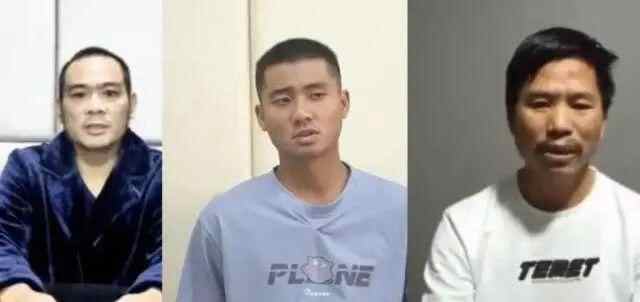CCTV News:According to the website of the Supreme People’s Procuratorate, on February 25th, the Supreme People’s Procuratorate released a typical case of emerging formats to govern juvenile protection procuratorial public interest litigation, and summarized and promoted the typical experience of developing emerging formats to govern juvenile protection procuratorial public interest litigation in various places, aiming at consolidating consensus, better safeguarding the legitimate rights and interests of minors, and helping to modernize the national governance system and governance capacity.
There are four cases in this batch, including: the administrative public interest litigation case of Shanghai procuratorate urging to perform the supervision duties of on-demand cinemas, the administrative public interest litigation case of Zhuji Procuratorate of Zhejiang Province urging to perform the supervision duties of e-sports hotels, the administrative public interest litigation case of Renqiu Procuratorate of Hebei Province urging to perform the supervision duties of blind box market, and the administrative public interest litigation case of Minhang District Procuratorate of Shanghai urging to perform the supervision duties of secret room script killing.
The release of this batch of cases is a pragmatic measure for procuratorial organs to conscientiously implement the spirit of the 20th Party Congress and the National People’s Congress Standing Committee (NPCSC)’s deliberation of the Report of the Supreme People’s Procuratorate on the People’s Procuratorate’s Procuratorial Work for Minors. In the governance of emerging formats such as video-on-demand cinemas, e-sports hotels, blind boxes and secret rooms, local procuratorial organs give full play to the advantages of centralized and unified handling of juvenile procuratorial business, actively perform the function of procuratorial public interest litigation according to law, give full play to the role of comprehensive judicial protection, promote "management by myself", promote all parties to fully perform their duties according to law, and actively give full play to the advantages of digital procuratorial work, empower the supervision of emerging formats, and carry out investigation and evidence collection, determine the objects of supervision, and file public interest litigation.
The person in charge of the Ninth Procuratorate of the Supreme People’s Procuratorate said that the next step of the Supreme People’s Procuratorate will continue to strengthen the guidance for the next business and improve the accuracy, standardization and timeliness of minors’ procuratorial performance; Constantly strengthen the whole society’s understanding of the potential risks, regulatory blind spots and governance difficulties of juvenile protection in emerging formats, promote the coordinated governance of all parties, fill in the shortcomings of social governance of juvenile protection, and escort the healthy growth of minors.
A typical case of public interest litigation for the protection and prosecution of minors under the governance of emerging formats
Case 1
Administrative public interest litigation case of Shanghai procuratorate urging to perform the supervision duty of on-demand cinema
[Keywords:]
On-demand Cinema Administrative Public Interest Litigation Integration Performance Industry Governance
【 gist 】
In view of the outstanding problems in the protection of minors in VOD cinemas, such as irregular operation, imperfect system and imperfect security measures, the procuratorial organs give full play to the advantages of integration, publicly announce the delivery of procuratorial suggestions, promote the administrative supervision departments to perform their duties, make concerted efforts, promote the supervision of similar cases and the management of complaints, and at the same time promote the self-discipline and autonomy of the industry to achieve a win-win situation in protecting minors and ensuring the healthy development of emerging formats.
[Basic case]
In handling the case, the Shanghai procuratorate found that from January to June 2020, some cases of sexual assault against minors occurred in on-demand cinemas. After sampling over 30 video-on-demand cinemas, it is found that there are many problems in video-on-demand cinemas, such as inadequate implementation of registration and filing system, imperfect public security measures, imperfect industry norms and inadequate implementation of protection measures for minors, which infringe on the legitimate rights and interests of minors.
[Performance of Procuratorial Organs]
The People’s Procuratorate of Fengxian District, Shanghai found in handling the rape case of Shen Moumou that the places where Shen Moumou had two sexual assaults were all on-demand cinemas. According to the investigation, while the number of video-on-demand cinemas is growing rapidly and being sought after by minors, there are many situations, such as not registering according to law, highly private rooms, providing accommodation services in disguise, and minors can enter and leave at will without identity verification. There are hidden dangers of minors being sexually assaulted or other illegal and criminal acts. The administrative directors and supervision departments of film and cultural law enforcement failed to fully perform their supervision duties on VOD cinemas, which violated the Law of People’s Republic of China (PRC) on the Protection of Minors, Regulations on the Management of VOD Cinema and VOD Cinema, Measures for the Administration of Public Security in Hotel Industry and other laws and regulations, resulting in inadequate supervision and management of VOD cinemas, affecting the physical and mental health of minors and infringing on social public interests.
In April 2021, Fengxian District People’s Procuratorate filed an administrative public interest lawsuit. On the basis of on-the-spot arrangement, visiting administrative supervision departments and holding seminars, on April 15, it issued procuratorial suggestions to the District Cultural Law Enforcement Brigade and the District Press, Publication and Film Management Office, respectively, and put forward suggestions such as exploring the establishment of a management system for receiving minors in on-demand cinemas, carrying out special inspections in the industry, and strengthening information communication to form a joint force of supervision. The two recommended units attached great importance to it, fully adopted the contents of the procuratorial suggestions, formed a joint inspection team to inspect the on-demand cinemas in the whole district, and jointly issued the "Five Provisions on Minors’ Access to the on-demand cinemas in Fengxian District" with the District Procuratorate and the Public Security Bureau. In May, the District Cultural Law Enforcement Brigade and the District Press, Publication and Film Management Office respectively replied in writing to the Fengxian District People’s Procuratorate on the implementation of the procuratorial suggestions.
In view of the problem that the supervision of video-on-demand cinemas is not in place, the people’s procuratorates in Pudong, Jing ‘an, Changning and other districts in Shanghai have also promoted comprehensive management by handling public interest litigation cases. On this basis, in September, 2021, the Shanghai Municipal People’s Procuratorate issued a procuratorial proposal to the Shanghai Film Bureau, proposing several suggestions, such as further promoting the standardized rectification activities of the on-demand cinema market, clarifying the regulatory norms of the on-demand cinema operation, improving the protection measures for minors, and guiding the on-demand cinema to strengthen industry autonomy, and simultaneously copying them to the Law Enforcement Corps of the Municipal Culture and Tourism Bureau and the Market Supervision Administration Bureau, so as to promote multi-departments to perform their duties in a coordinated manner. In order to further build consensus and arouse the attention of all sectors of society to the protection of minors involved in on-demand cinemas, the Shanghai Municipal People’s Procuratorate held a public announcement of procuratorial suggestions, inviting the heads of relevant departments of the suggested units and copied units, as well as some representatives of the Municipal People’s Congress, CPPCC members, people’s supervisors of the Municipal Procuratorate and invited supervisors to participate, listen to the introduction of relevant units on the rectification plan and initial implementation, and discuss governance measures.
After receiving the procuratorial suggestions, the suggested units attached great importance to it and took effective measures to standardize the governance of the VOD cinema industry. With the active promotion of the Shanghai Municipal People’s Procuratorate, the Shanghai Film Bureau, the Law Enforcement Corps of the Culture and Tourism Bureau, together with the Public Security Bureau and the Market Supervision Administration, concentrated on the market regulation and rectification activities of the city’s on-demand cinemas, and inspected more than 1,400 related places, filed 11 cases for punishment, and shut down more than 240 unqualified cinemas, which significantly improved the market regulation of on-demand cinemas. The Municipal Film Bureau also guided Shanghai Film Distribution and Exhibition Association to set up the first professional management committee of VOD cinema in China, issued industry norms, and unified norms on public security management in places, protection measures for minors, implementation of mandatory reporting system, etc., filled the gaps in laws and regulations, and led the business model of VOD cinema to the track of legal development.
[Typical meaning]
As a new mode of cultural entertainment, video-on-demand cinema not only meets the growing needs of people’s cultural life, but also should pay attention to the hidden risks of protecting minors. Shanghai procuratorial organs give full play to the advantages of the integration of the upper and lower courts in performing their duties. While punishing the crimes of sexual assault against minors according to law, they are keenly aware of the clues of public interest litigation cases. On the basis of determining the objects of supervision according to the actual situation, they promote the relevant functional departments to clarify their rights and responsibilities and make joint efforts by adopting the methods of public announcement, sending procuratorial suggestions to the competent departments of the industry and copying them to other administrative law enforcement departments. It also promoted the establishment of the country’s first professional management Committee for on-demand cinemas, introduced industry autonomy norms, and guided enterprises to operate in compliance, achieving a win-win situation for the protection of minors and the healthy development of emerging formats.
travel to watch industry
The People’s Procuratorate of Zhuji City, Zhejiang Province urged to perform the supervision duties of e-sports hotels.
[Keywords:]
Special supervision of public hearing of administrative public interest litigation in e-sports hotels
【 gist 】
E-sports hotels illegally accept minors, which is easy to breed minors to commit crimes and damage their physical and mental health. Procuratorial organs actively perform their duties, clarify the focus of disputes through public hearings, introduce rules for handling similar cases, clearly improve the regulatory path, urge administrative organs to implement regulatory responsibilities, and promote relevant departments to work together to strengthen supervision of e-sports hotels. Rely on digital empowerment, build supervision modeling, innovate research and development applications, and realize source governance and system governance of emerging industries.
[Basic case]
In 2021, the People’s Procuratorate of Zhuji City, Zhejiang Province found that under the background of increasingly standardized supervision of Internet business premises with single format, such as Internet cafes, e-sports hotels accepted many minors to surf the Internet in the form of hotel accommodation with a mixed business model of "accommodation+internet access", which led to many cases involving minors.
[Performance of Procuratorial Organs]
Zhuji City People’s Procuratorate found in the theft case of juvenile criminal suspect Chen Moumou and others that Chen Moumou and others used the identity of adults to stay in an e-sports hotel, implemented unlimited Internet access, carried out theft in hotel rooms, and purchased cigarettes and alcohol. E-sports hotels have loopholes in management, failing to strictly carry out identity checks and fulfill the obligations of network protection for minors, and there are problems such as unlicensed operation and illegal sale of tobacco and alcohol to minors, which endanger the physical and mental health of minors.
After discovering the clues, Zhuji People’s Procuratorate filed an administrative public interest lawsuit in February 2022. Through on-the-spot investigation, asking check-in and service personnel, and issuing questionnaires throughout the city, it is found that there are 11 e-sports hotels in Zhuji since 2021, with 190 e-sports rooms and 480 computers online. E-sports hotels hold special industry licenses for hotels, but all of them use Internet access services such as high-end computers and online games for many people as the main means of attracting; In some e-sports hotels, in order to facilitate minors to stay in e-sports hotels and surf the Internet at will, there are phenomena such as others opening rooms on their behalf, one person opening a room and many people surfing the Internet. Some e-sports hotels illegally sell tobacco and alcohol to minors. This leads to unhealthy behaviors of minors, such as indulging in the Internet, staying out at night, playing truant and dropping out of school, which seriously harms the physical and mental health of minors, and it is urgent to strengthen supervision.
According to the existing regulations, the e-sports hotel is a mixed business model, and its business nature and supervision subject are not clear. In order to gather consensus from many parties and find a regulatory path, Zhuji Municipal People’s Procuratorate held a public hearing, and invited representatives of administrative organs such as Municipal Bureau of Culture, Radio, Film and Television, Market Supervision Bureau, experts and scholars, deputies to the National People’s Congress, members of the Chinese People’s Political Consultative Conference, and public interest litigation observers to serve as hearing officers. At the meeting, the hearing officers fully expressed their opinions on the disputes over the application of the law and practical difficulties, and reached a consensus that e-sports hotels should be under the dual management of hotel accommodation and Internet service business premises, and all departments should form a joint force of supervision and take the initiative to strengthen the supervision and management of emerging formats. On this basis, Zhuji Municipal People’s Procuratorate issued procuratorial suggestions for administrative public interest litigation before litigation to the Municipal Bureau of Culture, Radio, Film and Tourism, and issued procuratorial suggestions for social governance to the Municipal Public Security Bureau. It is suggested that it fully perform its supervisory duties in accordance with the law. While supervising the accommodation of e-sports hotels, it is important to strengthen supervision over the acceptance of minors’ unrestricted Internet access in e-sports hotels. After receiving the procuratorial suggestions, the relevant functional departments promptly urged the rectification. In April 2022, they all replied to the Zhuji Municipal People’s Procuratorate, actively adopted and fully implemented the contents of the procuratorial suggestions, punished 16 e-sports hotels according to law, and implemented the "accommodation+internet access" dual registration system for e-sports hotels, and installed online registration management software for computers of e-sports hotels in the city, effectively supervising and managing the problem of unlimited internet access for minors.
On the basis of case handling, in order to build a mechanism to promote system governance, on March 18th, 2022, Zhuji Municipal People’s Procuratorate, under the leadership of Zhuji Municipal Political and Legal Committee, promoted ten departments, including the Municipal Bureau of Culture and Tourism and the Municipal Market Supervision Bureau, to issue the Implementation Plan for the Special Governance of the New Business Form of "E-sports Hotel", detailed the division of responsibilities and objectives and tasks, and established mechanisms such as joint meeting, information exchange, clue transfer and collaborative governance. And promote the four departments of the Municipal Bureau of Commerce, the Municipal Public Security Bureau, the Municipal Wenguang Tourism Bureau and the Municipal Market Supervision Bureau to issue the "Regulations on Industry Management of E-sports Hotels (Trial)" to promote long-term governance of the industry.
In the process of promoting the governance of e-sports hotels through case handling, Zhuji Municipal People’s Procuratorate has given full play to the advantages of digital prosecution, empowered minors with big data through digital modeling and governance platform application, and built a comprehensive governance protection network. The first is to build a digital supervision model. By collecting the core data such as the location information of illegal and criminal cases involving minors, the operation information of e-sports hotels and the registration information of minors’ accommodation, the "new format supervision and governance model of e-sports hotels" was built on the Zhejiang procuratorial data application platform. Through the comparative analysis of the above data, the illegal acceptance of minors by e-sports hotels and the illegal and criminal cases of minors in e-sports hotels were sorted out. The second is to strengthen the digital supervision of key personnel and equipment. Through the collision between the registration data of the people staying in the e-sports hotel and the juvenile delinquency data, 46 juvenile delinquents who often go in and out of the e-sports hotel and indulge in the internet and stay out at night are sorted out, and they are included in the "Xinghai Watch" juvenile delinquency prevention and control platform independently developed by Zhuji Municipal People’s Procuratorate to carry out educational correction and graded intervention. Promote relevant departments to install online registration management software for computers in 11 e-sports hotels in the city. After the software is installed, it needs to be registered by real name and face recognition before opening a card to access the Internet. The third is to research and develop applications to improve the governance path. Research and development of "digital supervision application of e-sports hotels", using hotel accommodation registration data, online registration data, and juvenile data collision comparison,Realize the real-time early warning of the follow-up acceptance of minors in the e-sports hotel and the abnormal situation of surfing the Internet, and urge the administrative organs to strengthen supervision by digital means, and improve the "case handling — Case supervision — The long-term governance path of system governance.
[Typical meaning]
As a rapidly developing emerging format in recent years, e-sports hotels are favored by many minors. Procuratorial organs actively explore the path of judicial protection of minors in line with digital civilization, find problems through digital supervision system, target treatment through digital application, and promote the clue discovery, investigation and verification, procuratorial supervision and comprehensive treatment of minors involved in e-sports hotels. At the same time, we will actively unite the efforts of minors’ protection, upgrade the experience of case handling to the rules of case-like governance, effectively plug the regulatory loopholes of emerging formats, and promote the comprehensive judicial protection of minors.
Case 3
The People’s Procuratorate of Renqiu City, Hebei Province urged the administrative public interest litigation case of performing the supervision duties of the blind box market.
[Keywords:]
Comprehensive protection around campus for public hearing of administrative public interest litigation in blind box market
【 gist 】
In view of the problem that blind box sales around the campus infringe on the rights and interests of minors, the procuratorial organs earnestly perform their judicial protection duties, comprehensively use public interest litigation and social governance procuratorial suggestions, and use judicial protection to boost the coordinated efforts of the government, schools, society and families to effectively protect the legitimate rights and interests of minors.
[Basic case]
In recent years, the People’s Procuratorate of Renqiu City, Hebei Province found that various kinds of blind boxes flooded the market around the campus. In view of the characteristics of blindness and addiction of minors’ consumption, operators induce minors to consume impulsively, and take the opportunity to sell blind box products to minors with substandard quality, real products inconsistent with packaging and publicity, and inappropriate content, which infringes on the legitimate rights and interests of minors and harms the public interests.
[Performance of Procuratorial Organs]
In March 2022, the People’s Procuratorate of Renqiu City, Hebei Province paid attention to the prevalence of blind box sales around many primary and secondary schools through the CCTV "3.15" party. Some parents also report that their children are addicted to blind box consumption, which affects their physical and mental health. After discovering the clue of the case of protecting minors, Renqiu People’s Procuratorate conducted an investigation on the sales of blind boxes around the local campus, and found that there were a large number of problem blind boxes on sale in 13 stationery stores around 4 schools, covering stationery, toys, cards and other types, all of which were designed for minors’ preferences. The influence of blind box chaos on minors is mainly concentrated in four aspects: first, a large number of "three noes" toys and stationery with poor quality and unknown sources are made into blind boxes for sale to minors; Second, false propaganda, a large number of blind box packaging is seriously inconsistent with the internal objects; Third, the content is inappropriate. A large number of products are packaged with unauthorized photos and pictures, and some products are printed with propaganda words that are not suitable for minors, such as "About Goddess"; Fourth, it is easy to induce impulsive consumption, and the uncertainty of blind box products is easy to induce impulsive consumption of minors, and resources are wasted due to repeated purchases. According to the Law of People’s Republic of China (PRC) on the Protection of Minors, the Law of People’s Republic of China (PRC) on Product Quality, the Law of People’s Republic of China (PRC) on the Protection of Consumers’ Rights and Interests and other relevant laws and regulations, aiming at the problem that the supervision of blind box sales is not in place, on the basis of preliminary investigation,Renqiu Municipal People’s Procuratorate filed an administrative public interest lawsuit on March 18, 2022.
In order to further build consensus, on March 25th, 2022, Renqiu Municipal People’s Procuratorate held a public hearing, invited NPC deputies, CPPCC members and people’s supervisors as hearing officers, and invited the leaders of the Municipal People’s Congress Standing Committee, the Communist Youth League Committee, the Education and Sports Bureau, the Market Supervision Bureau and other relevant units and some primary and secondary school teachers to participate in it, and made in-depth discussions on the illegal issues involved in the current blind box chaos, the infringement of minors’ legitimate rights and interests, and how to promote the governance of the blind box problem, and reached a consensus on governance. After the hearing, Renqiu Municipal People’s Procuratorate publicly announced to the Municipal Market Supervision Administration that it would serve the procuratorial suggestions before the administrative public interest litigation, suggesting that special law enforcement inspections should be carried out on the blind box market in the city, and unqualified blind box products should be investigated and dealt with according to law; To further standardize the business behavior of blind box operators, operators should obtain the consent of guardians in advance when selling blind boxes to minors under the age of 8; Strengthen contact and cooperation with the education department, and implement long-term supervision of blind box sales places around the campus; Smooth reporting channels, publish reporting telephones and platforms, and encourage clues to report; Increase publicity and education, and guide operators to know the law, abide by the law and operate in compliance.
After receiving the procuratorial proposal, the Market Supervision Administration attached great importance to it, and formulated the "Renqiu Market Supervision Administration’s Special Remediation Action Plan for Blind Box Management", which carried out net-pulling inspections in two key areas, namely, the wholesale market of goods and the retail shops around the campus, involving more than 630 shops, and removed more than 3,500 unqualified blind box products in 69 categories, and issued a notice to blind box sales shops on rectifying the market order, so as to clarify the common illegal problems behind selling blind boxes to minors and guide operators to operate legally. At the end of May, the Market Supervision Administration sent a written reply to Renqiu City Procuratorate on the implementation of the rectification of procuratorial suggestions.
At the same time, Renqiu Municipal People’s Procuratorate issued procuratorial suggestions on social governance to the local education department. In view of the problems that students generally buy blind boxes and blind box sales widely exist around the school, it is suggested that the education department strengthen the linkage and cooperation with the market supervision department, guide the school to earnestly perform its protection duties, pay attention to the chaos of blind box sales around the campus, and find and hand over clues in time; Strengthen the risk warning and guidance education for students in school to safeguard their legitimate rights and interests. The People’s Procuratorate of Renqiu City, together with the local education department, produced a Letter to Parents, calling on parents and schools to pay close attention to the consumption situation of minors, help minors develop good consumption habits, and report violations of their legitimate rights and interests in a timely manner. All schools strengthen the guidance and education of students’ consumption concept in time, and some schools set up small financial and business classes to help students cultivate correct consumption concepts, so as to achieve the same frequency resonance and the same direction of school protection and family protection. Promote the efforts of society, government, schools and families in the same direction through justice, and promote the governance of blind box problems.
In order to ensure the governance effect, Renqiu People’s Procuratorate continued to follow up. In June and September, 2022, it conducted a "look back" on the sales of blind boxes around the campus twice, and temporarily checked 53 blind box businesses. All kinds of unqualified blind box products have been removed from the shelves of relevant shops, and warning signs such as "rational consumption" and "no minors under 8 years old to buy alone" have been posted on the shelves of blind box products, which has significantly enhanced the operators’ awareness of obeying the law and effectively activated the social protection force.
[Typical meaning]
Blind box chaos around campus infringes on the legitimate rights and interests of minors. Focusing on the problem of minors’ protection, the procuratorial organs take the handling of public interest litigation cases as the starting point, actively perform their duties, promote the concerted efforts of society, government, schools and families, and promote "joint management" with "self-management" to form a co-governance pattern, which has effectively purified the local blind box market order, initially established a long-term governance mechanism, and effectively practiced the concept of "promoting the implementation of the other five major protections with judicial protection".
Case 4
The Minhang District People’s Procuratorate of Shanghai urged the administrative public interest litigation case to perform the supervisory duty of script killing in the secret room.
[Keywords:]
Classification, policy and source management of administrative public interest litigation in secret room script killing
【 gist 】
In view of the regulatory problems of the secret room and script killing industry, the procuratorial organs can focus on different issues and make classified policies to promote relevant departments to base themselves on their functions and jointly rectify them. Procuratorial organs can promote the improvement of the national industry supervision system by promoting industry autonomy and leading administrative law enforcement units to establish rules and regulations, and promote good laws and good governance of emerging formats.
[Basic case]
The number of secret rooms and script killing stores in Shanghai ranks first in the country, and the location of stores is around the school, accounting for 12%. However, due to the unclear nature of the industry, low entry threshold, lack of standards in decoration design, narrow or closed evacuation routes, lack of fire-fighting equipment and other problems, it is easy to cause fire and other security risks. Some scripts contain blood, violence, superstition and other prohibited contents, which are easy to induce psychological discomfort of minors and even imitate illegal and criminal acts. Most merchants did not give tips to minors according to the content, and accepted minors to play without time limit, which seriously affected their physical and mental health.
[Performance of Procuratorial Organs]
In August 2021, Minhang District People’s Procuratorate found that some minors involved in the case were keen to participate in the secret room and script killing activities; In the process of carrying out the work of the vice president of the rule of law, many students also reported that they suffered personal injury and psychological discomfort due to their content and environment during the experience of secret room and script killing, and there may be situations and hidden dangers that infringe on the physical and mental health of minors. After investigation, there are more than 40 secret rooms and scripts in Minhang District. Operators do not need to register their business scope, and they do not need permission and approval. The site selection and construction are arbitrary and are not bound by the Regulations on the Administration of Entertainment Places. Many operators’ internal decoration and fire protection configuration do not meet the relevant requirements of fire protection law and local fire protection regulations, and there is a fire risk; Some scripts contain elements such as violence, pornography and feudal superstition; In order to avoid risks, some operators require players to sign the "Disclaimer", especially for underage consumer groups, but the stores have not taken special protection measures according to their physical and mental characteristics. At the same time, nearly 20,000 questionnaires were distributed to primary and secondary schools in the whole region, and it was found that about 50% of primary and secondary school students knew or experienced the escape from the secret room and the script killing. Most of them played the script containing horror and violence, and some students reported that they had fallen, frightened or even sexually harassed during the escape from the secret room. After evaluation, although the current law does not prohibit minors from experiencing the secret room script killing activities,However, the prohibited contents and potential safety hazards in this industry have violated the relevant provisions of the Regulations on the Administration of Publishing and the Law on the Protection of Minors in People’s Republic of China (PRC), but the relevant administrative departments have not performed their duties in place, and the public interests of minors have been seriously violated. In September 2021, Minhang District Procuratorate filed an administrative public interest lawsuit.
In the investigation, the procuratorial organ found that based on the existing regulations, the business scope of the script killing industry could not be clearly defined by industrial and commercial registration, whether the script killing place in the secret room belongs to entertainment places and should be subject to administrative licensing was controversial, and how to implement fire control supervision was not clear. Faced with the outstanding problem of "weak standardization" in the secret room and script killing industry, the difficult problems of management supervision and many law enforcement units, Minhang District Procuratorate held a special seminar, invited experts and scholars and relevant administrative law enforcement units at the urban level to study together, reached a consensus on law enforcement concepts, performance cooperation and supervision services, and invited business representatives to discuss and listen to the needs of rule of law protection. In October, 2021, Minhang District People’s Procuratorate issued a consultation letter to the District Bureau of Culture and Tourism, suggesting that it strengthen the supervision of the content of script entertainment activities and explore the implementation of juvenile protection measures in accordance with the relevant provisions of the Measures for the Administration of Comprehensive Administrative Law Enforcement in Cultural Markets, the Regulations on the Administration of Publishing and the Regulations on the Administration of Commercial Performances. According to the provisions of the Public Security Administration Punishment Law, the Fire Protection Law and the local fire protection regulations, it is suggested that the district public security bureau strengthen the public security management, fire supervision and inspection and fire prevention publicity and education of the script entertainment business premises. Based on their respective responsibilities, the relevant functional departments jointly carried out special activities for the investigation and management of hidden dangers in the secret room escape and script killing industry, carried out more than 240 inspections, removed 24 scripts that endangered the physical and mental health of minors, rectified 53 hidden dangers, and ordered 7 rectifications.Achieve positive results.
On the basis of handling individual cases, Minhang District People’s Procuratorate took the lead in drafting the "Proposal on the Protection of Minors in the Chamber of Secrets Script Killing Industry", advocating enterprises to fulfill their social responsibilities for the protection of minors in seven aspects, such as self-examination and classified management of content, setting up minor areas, and implementing mandatory reports, and promoting more than 40 enterprises to post and follow up on their business premises to promote industry autonomy. In view of the shortage of normative documents in this industry, Minhang District People’s Procuratorate, together with the public security, cultural tourism, market and fire protection departments, will sign the standardized management measures for the secret room script killing industry in December 2021, and put forward special protection measures for minors, such as exploring content grading, age-appropriate tips, checking minors’ identity and standardizing time management.
[Typical meaning]
Escape from the secret room and script killing have gradually become a new entertainment and social way widely loved by minors, and also a weak link in social governance. Procuratorial organs can actively perform the procuratorial function of public interest litigation. In view of the dilemma of unclear industry ownership and involving multi-sector law enforcement, consensus is reached through special seminars, and joint rectification is carried out through classified policies, urging all functional departments to perform their duties and work in the same direction.
Promote emerging business forms, govern according to law, and join hands with all parties to protect minors.— — The person in charge of the Ninth Procuratorate of the Supreme People’s Procuratorate answered a reporter’s question on publishing a typical case of juvenile protection procuratorial public interest litigation with emerging formats.
On February 25th, the Supreme People’s Procuratorate released a typical case of procuratorial public interest litigation for the protection of minors. What is the background of these typical cases? What are the characteristics? What measures will the procuratorial organs take in the next step to promote the work of public interest litigation for the protection of minors in emerging formats? The head of the Ninth Procuratorate of the Supreme People’s Procuratorate (also known as the Juvenile Procuratorate) answered the reporter’s questions on related issues.
Q: What is the background of this typical case released by the Supreme People’s Procuratorate?
A:The Party’s Report to the 20th CPC National Congress clearly put forward the requirements of protecting children’s legitimate rights and interests. It is the duty of procuratorial organs to practice the supreme leader’s thought of rule of law and safeguard the legitimate rights and interests of minors to carry out public interest litigation for the protection of minors. In recent years, e-sports hotels, script killings, on-demand cinemas and other emerging formats have been welcomed by consumers, including minors, but at the same time, there are also blind spots in supervision and management and potential risks that affect the healthy growth of minors. We publish these typical cases mainly based on the following considerations:
First, the need to implement the National People’s Congress Standing Committee (NPCSC)’s deliberation opinions and strengthen the protection of minors. On October 28th, 2022, the 37th session of the 13th the National People’s Congress Standing Committee (NPCSC) listened to and considered the report made by the Procurator-General of the Supreme People’s Procuratorate, Zhang Jun, on the procuratorial work for minors, fully affirmed the effectiveness of procuratorial work for minors in recent years, clearly pointed out the difficulties and existing problems in performing their duties, and put forward opinions and suggestions on strengthening the professional construction of procuratorial work for minors and promoting the overall implementation of the "six protections". During the deliberation, the participants put forward specific opinions and suggestions on strengthening the protection of minors in the governance of emerging formats, pointing out that "the lack of supervision on the protection of minors’ rights and interests associated with emerging formats such as e-sports hotels and escape from secret rooms, as well as the overall planning of minors’ comprehensive assistance, legal popularization and other work forces, etc., require the joint participation of all forces." The release of these typical cases of public interest litigation for the protection of minors in emerging formats is the height of implementing the National People’s Congress Standing Committee (NPCSC)’s deliberation opinions and strengthening legal supervision, and it is a powerful guide for the national procuratorial organs to do a good job in the procuratorial work of public interest litigation for the protection of minors in emerging formats.
The second is the need to pay more attention to the hidden dangers of minors’ protection in emerging formats. In handling cases, the procuratorial organs found that while the emerging business forms are developing rapidly and being welcomed by minors, there are certain regulatory blind spots and hidden dangers in the protection of minors. Some on-demand cinemas take personalization and privacy as their selling points, and the space is relatively closed, which is prone to illegal and criminal acts such as public security problems and sexual assault. Some blind boxes sold around primary and secondary schools are not marked with important information such as brand, manufacturer, address and implementation standards, and the product quality is shoddy. Some e-sports hotels accept minors’ unlimited access to the Internet, fail to truthfully register the identity information of check-in personnel, and illegally sell cigarettes and alcohol to minors. Some scripts used to kill business premises contain bloody, violent, horrible, superstitious content, and even interspersed with pornographic and drug-related plots, but the operators failed to fulfill their obligation to remind minors, resulting in the physical and mental health of minors being damaged, and so on.
The third is the need to unite social consensus and solve the dilemma of emerging business governance. At present, there are the following problems in the governance of emerging formats: first, the ownership of the industry is not clear. For example, e-sports hotel supervision involves market supervision, public security, cultural tourism and other departments, and issues such as overlapping functions affect the implementation of regulatory responsibilities. The second is that the industry norms are not perfect. For example, at present, the norms for VOD cinemas mainly focus on the fields of film screening and distribution, while the regulations such as the Measures for the Administration of Entertainment Places do not explicitly include VOD cinemas in the scope of supervision, which leads to the lack of law enforcement basis for administrative organs. The third is that the legal provisions are not clear. For example, e-sports hotel, as a new format, has no clear definition of industry attributes at present, and it is mainly managed according to the hotel industry, which leaves hidden dangers for minors to use online game equipment without restriction by staying in e-sports hotel. The fourth is that social attention is not enough. E-sports hotels, online booking rooms, on-demand cinemas, and blind boxes pose urgent risks to the protection of minors. However, from a national perspective, insufficient attention has been paid to the governance of emerging formats, resulting in insufficient protection synergy.
Q: What are the main working methods adopted by the procuratorial organs to carry out public interest litigation for the protection of minors in emerging formats, and what achievements have been made?
A:In the protection of minors in emerging business governance, local procuratorial organs have actively broadened the sources of clues, carried out in-depth investigation and evidence collection, accurately determined the objects of supervision, filed public interest litigation according to law, and cooperated to promote social governance, and achieved initial results.
First, give full play to the advantages of centralized and unified handling of juvenile procuratorial business and find supervision clues through multiple channels. For example, after CCTV’s "March 15 in Action" program exposed the chaos of blind boxes, Renqiu City Procuratorate of Hebei Province was keenly aware that the related problems might be universal, and immediately investigated the sales of blind boxes around the local campus, and focused on the outstanding problems in the blind box market, issued a procuratorial proposal to the market supervision department, and actively performed the supervision duties of public interest litigation.
The second is to organize expert seminars and industry hearings to fully unite the consensus of all parties. For example, the Minhang District Procuratorate of Shanghai held a seminar to invite functional departments, people’s supervisors, experts and scholars to explore the theoretical basis and practical path of standardized management of the scriptwriting industry in the secret room, and put forward opinions and suggestions on place safety, content grading, age-appropriate tips, identity inspection, employment constraints, mandatory reporting, etc. The Procuratorate of Zhuji City, Zhejiang Province organized a public hearing to discuss practical problems and governance countermeasures in view of the nature of e-sports hotels and the vague subject of supervision.
The third is to play the role of procuratorial public interest litigation and urge all parties to fully perform their duties. For example, in view of the fact that the supervision of on-demand cinemas involves multiple administrative departments, the Shanghai procuratorate issued and publicly announced procuratorial suggestions to the competent departments of the industry, and simultaneously copied them to the departments of market supervision and cultural law enforcement; Suqian City Procuratorate of Jiangsu Province filed a civil public interest lawsuit against the e-sports hotel, asking the e-sports hotel to prohibit the provision of Internet access services to minors, and publicly apologized in the national media. The court decision supported all the litigation requests of the procuratorate.
The fourth is to play the role of comprehensive judicial protection and promote "all management" with "I manage". For example, in promoting blind box governance, Renqiu City Procuratorate of Hebei Province not only promotes the administrative organs to perform their duties according to law through public interest litigation, but also promotes the family, school, society and government to form a co-governance pattern through judicial protection through social governance procuratorial suggestions, letters to parents, guiding schools to strengthen education guidance, and establishing linkage mechanisms.
Fifth, the introduction of local industry norms, collaborative governance to form a joint force. For example, the Minhang District Procuratorate of Shanghai, together with the five departments of public security, cultural tourism, market and fire protection, countersigned the measures for standardizing the management of the script killing industry in the secret room, and put forward special protection measures for minors such as exploring content grading, age-appropriate tips, checking the identity of minors, and standardizing time management.
Q: In the next step, what measures will the procuratorial organs take to push the emerging business forms to a new level?
A:Report to the 20th CPC National Congress of the Communist Party of China specially emphasized "strengthening the legal supervision of procuratorial organs" and "improving the public interest litigation system", and the National People’s Congress Standing Committee (NPCSC) also put forward clear requirements for the protection of minors in emerging formats in his deliberation opinions on the special report on unchecked work. In the future work, we will focus on the following aspects:
The first is to strengthen business guidance. Summarize the law of cases, refine the experience and methods, incorporate the procuratorial supervision of emerging formats into the relevant normative documents and guiding opinions of juvenile public interest litigation in a timely manner, and guide local procuratorial organs to improve the accuracy, standardization and effectiveness of handling cases.
The second is to promote the formation of a good atmosphere. We will strengthen publicity and guidance through various ways and means, such as continuing to carry out the activities of the rule of law into the campus, and co-producing and broadcasting the program "Guarding Tomorrow" with CCTV, so as to enhance the concern of the whole society about the protection of minors in emerging formats, raise the awareness of self-protection of minors, and prevent and resolve potential risks.
The third is to promote the cooperation and common governance of all parties. Adhere to supervision without substitution and offside, and further build consensus through seminars and expert argumentation; By introducing typical cases and analyzing special reports, we will strengthen communication with government supervision departments, strive to solve the blind spots in industry governance as soon as possible, fill in the shortcomings of social governance for the protection of minors, and strive to promote family, school, society, network and government protection with judicial protection and active performance of duties, so that "1+5>6= reality".


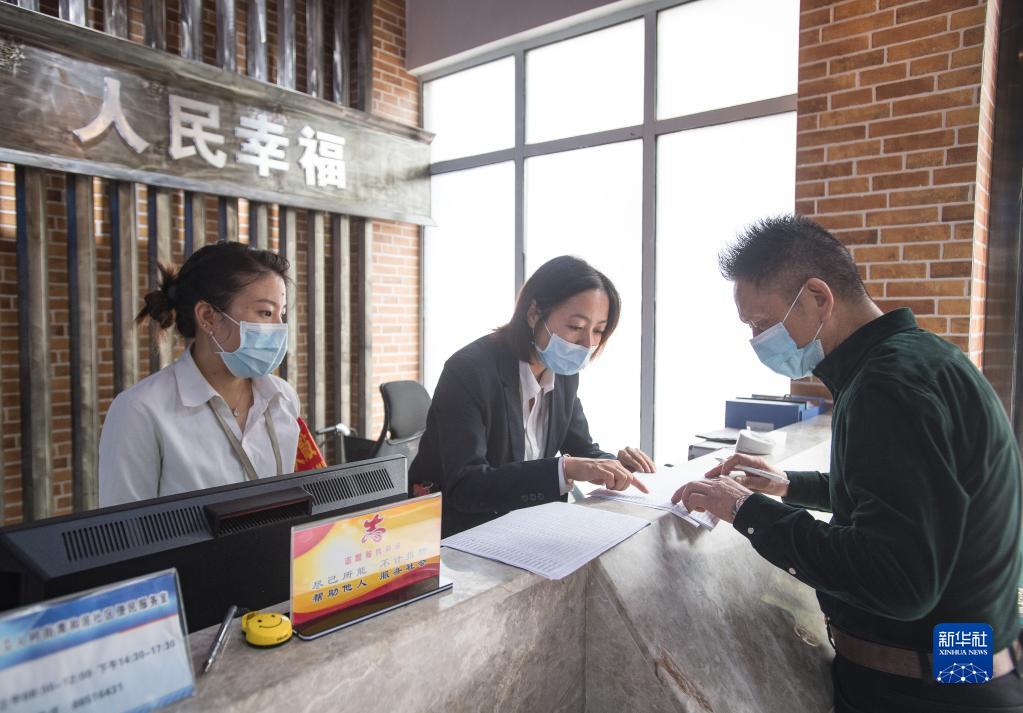
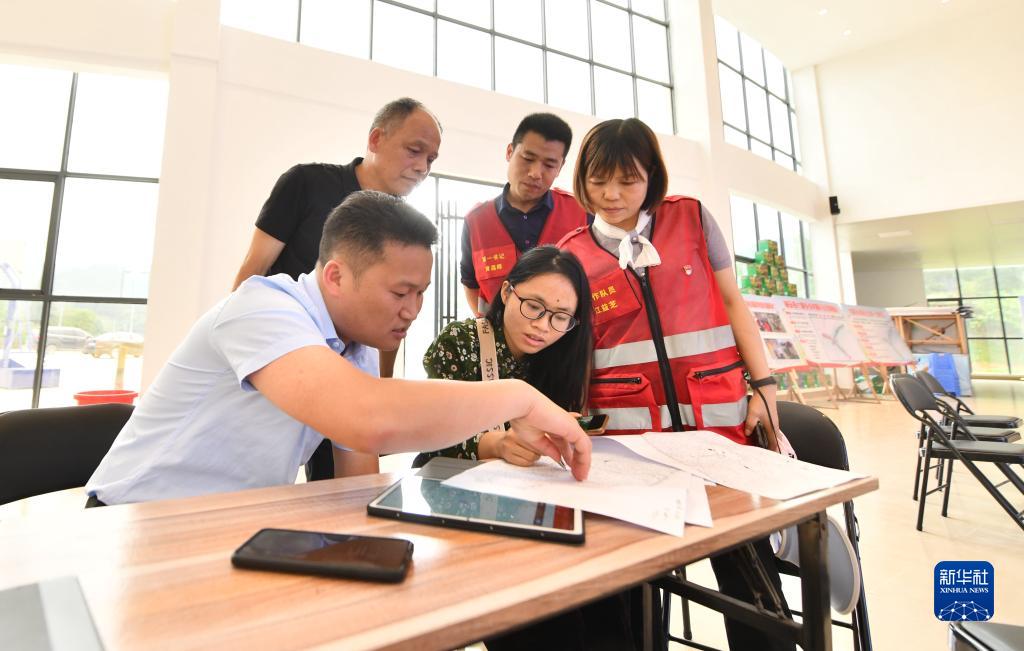

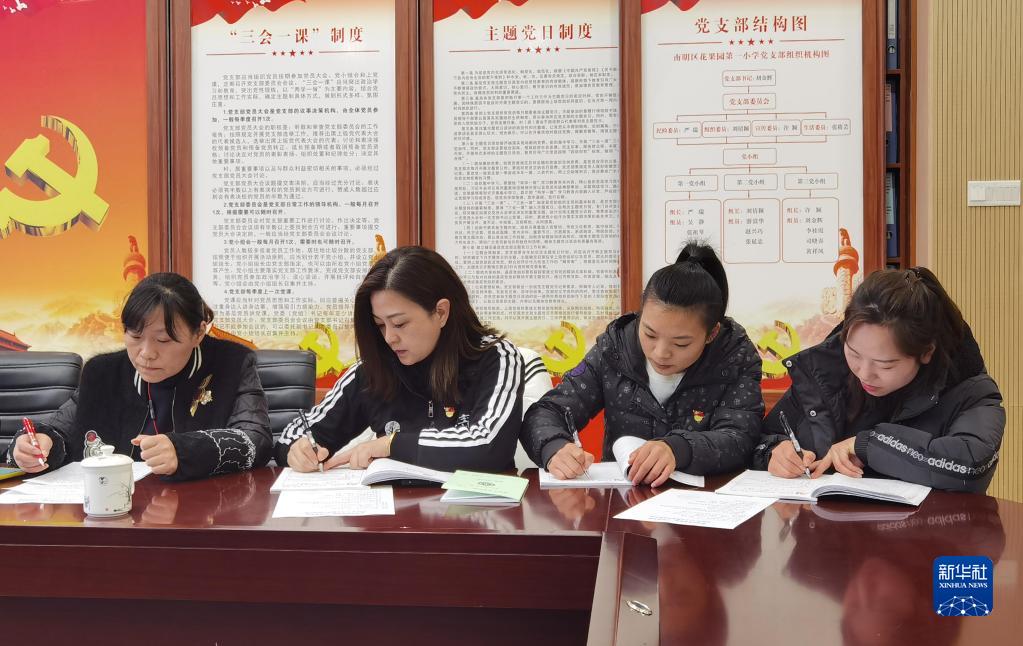
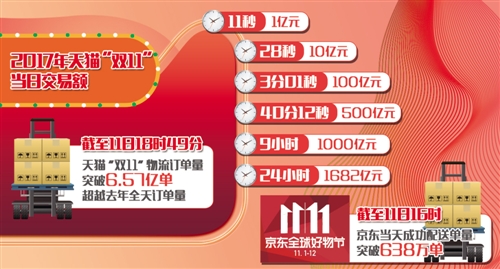

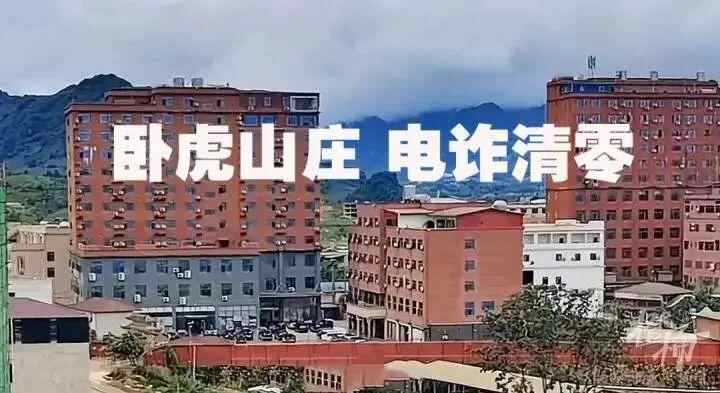
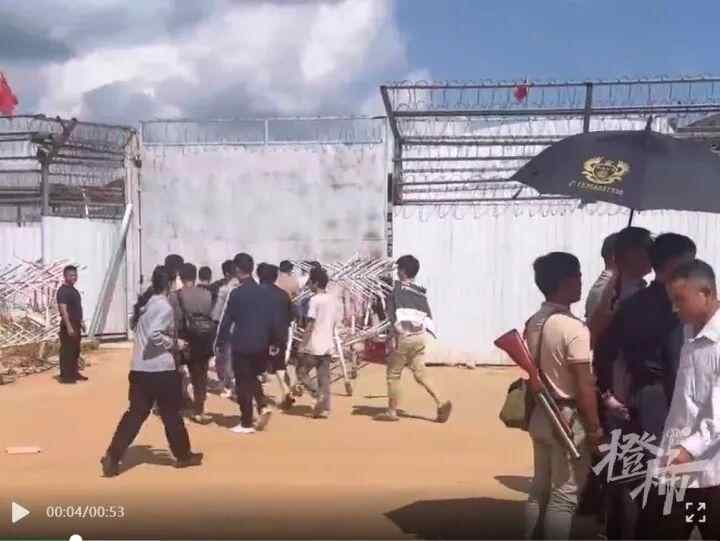
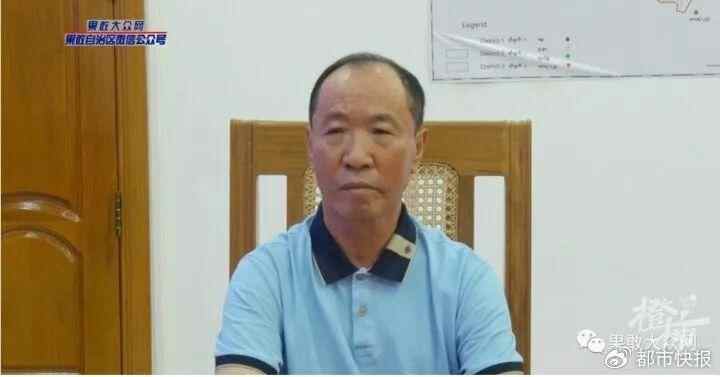 Source: Kokang Public Network
Source: Kokang Public Network